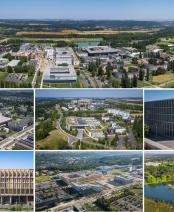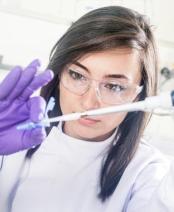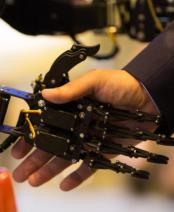[REFLEXIONS] The transition to low-carbon societies
![[REFLEXIONS] The transition to low-carbon societies](/sites/default/files/styles/actualite_full/public/actualites/images/2023-06/Design%20sans%20titre-2.jpg?itok=JnCx6vca)
From commitments to national strategies
Faced with the climate emergency, each signatory country to the Paris Agreement is required to draw up and update its "Nationally Determined Contribution" every five years, setting out its objectives in terms of reducing emissions and adapting to the effects of climate change. To achieve these objectives, we need to activate all our levers: technical, economic, social and political, as the issue is highly cross-cutting. This means involving all players in society, encouraging collaboration and innovation, while ensuring policy consistency at all levels and taking into account related issues such as biodiversity, water management, disaster prevention, agriculture, etc.
"The monitoring and evaluation of NDCs are key to the success of the Paris Agreement. However, accounting accurately and consistently for emissions is still a challenge, due to the lack of standardization in this area," explains Ekaterina Ghosh, a student of the Master in Economics for Smart Cities and Climate Policy at École polytechnique (IP Paris). This is what the OECD is tackling with the IPAC (International Program for Climate Action) indicator. IPAC's policy assessment tools and information on results and best practices complement the monitoring frameworks of the UNFCCC and the Paris Agreement, and also facilitate the coordination of climate action.
In France, as in many other countries, the pledge to achieve carbon neutrality by 2050 is reflected in a National Low-Carbon Strategy (SNBC), a roadmap for the transition to a decarbonized, circular and sustainable economy. Since its first edition in 2015, the SNBC has been based on a national greenhouse gas (GHG) inventory, listing emissions by major industries. It sets carbon budgets to encourage the reduction of GHG emissions, and also identifies the need for innovation and the associated technological hurdles. "Its four main objectives are to
- completely decarbonize energy use by 2050 (with the exception of air transport);
- cut energy consumption by half in all sectors of activity, by developing more energy-efficient equipment and adopting more frugal and circular lifestyles;
- reduce non-energy emissions as much as possible, especially from the agricultural sector and industrial processes;
- increase and secure carbon sinks, i.e. natural ecosystems, processes and materials capable of capturing a significant quantity of CO2: soils, forests, products from the bioeconomy ( such as straw and wood for construction), carbon capture and storage technologies".
The energy transition
On a global scale, electricity production alone represents the largest source of CO2 emissions, via the combustion of fossil fuels. This shows the weight of the energy sector and the importance of the energy transition.
"Limiting global warming requires major transitions in the energy sector, involving a substantial reduction in the use of fossil fuels, widespread electrification, improved energy efficiency and the use of alternative fuels," says Philippe Drobinski, Director of the Energy4Climate (E4C) Interdisciplinary Center at Institut Polytechnique de Paris.
The integration of renewable energies is one of the key challenges of the transition. It contributes to reducing the use of fossil fuels and decarbonizing transport, heating and air conditioning, notably through the electrification of these sectors. This transition implies the storage of electrical energy often produced by intermittent sources (wind, solar), using batteries or energy carriers such as hydrogen. Smart grids also come into play, to better manage the match between supply and demand, by introducing flexibility and better anticipation of fluctuations in demand.
"Renewable energies do, however, have environmental externalities, such as the consumption of raw materials for the construction of equipment, or a larger footprint than centralized energies. This will give rise to conflicts of use, for example between bioenergy and agriculture. All these issues are complex and require a global, multi-sector outlook for all the transitions underway. What's more, they involve several levels of decision-making, such as regional transition plans, which will need to be aligned with national strategies," adds Philippe Drobinski. The tools needed to meet these challenges do not currently exist, either in terms of modeling or governance. E4C is tackling these issues, for example by exploring solutions such as agrivoltaics, which could provide an answer to land-use conflicts by co-locating energy production and agricultural production, while preserving water resources".
Other solutions, such as CO2 sequestration, are also being implemented. But the need for sobriety is unavoidable. According to Philippe Drobinski, "the 10% energy savings achieved this winter are not sufficiently emphasized. Social acceptance is also a point that should not be underestimated, because without it, changes are doomed to failure, as demonstrated by the rejection of the carbon tax on road transport. This requires method and pedagogy".
This is why climate transition and governance are driving research involving humanities and social sciences, particularly at Institut Polytechnique de Paris.
Energy transition, carbon tax and markets, green finance, civil society involvement, climate action is multifaceted. Find out more about these themes during the REFLEXIONS conference which will take place on June 9 on the campus of Institut Polytechnique de Paris.













